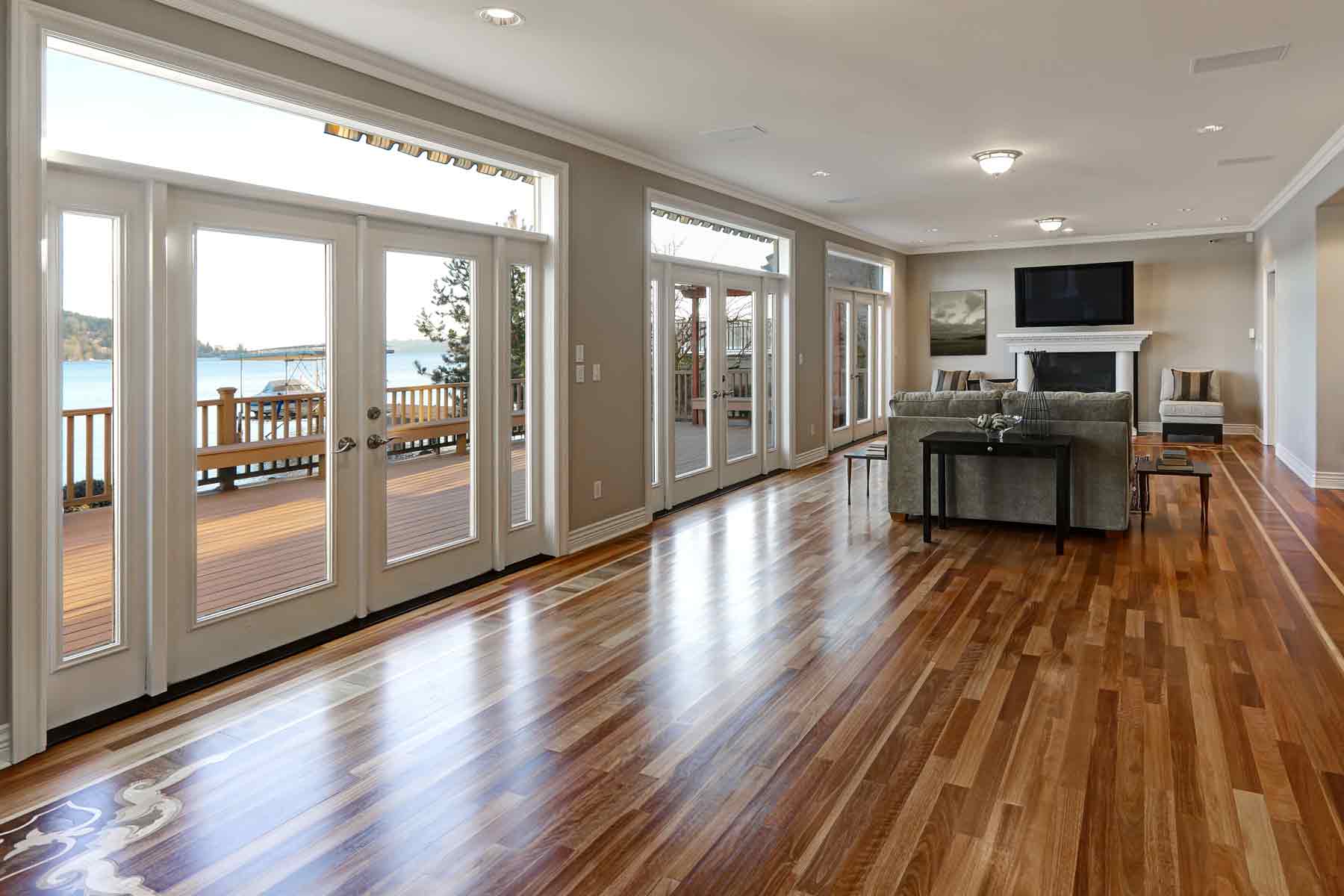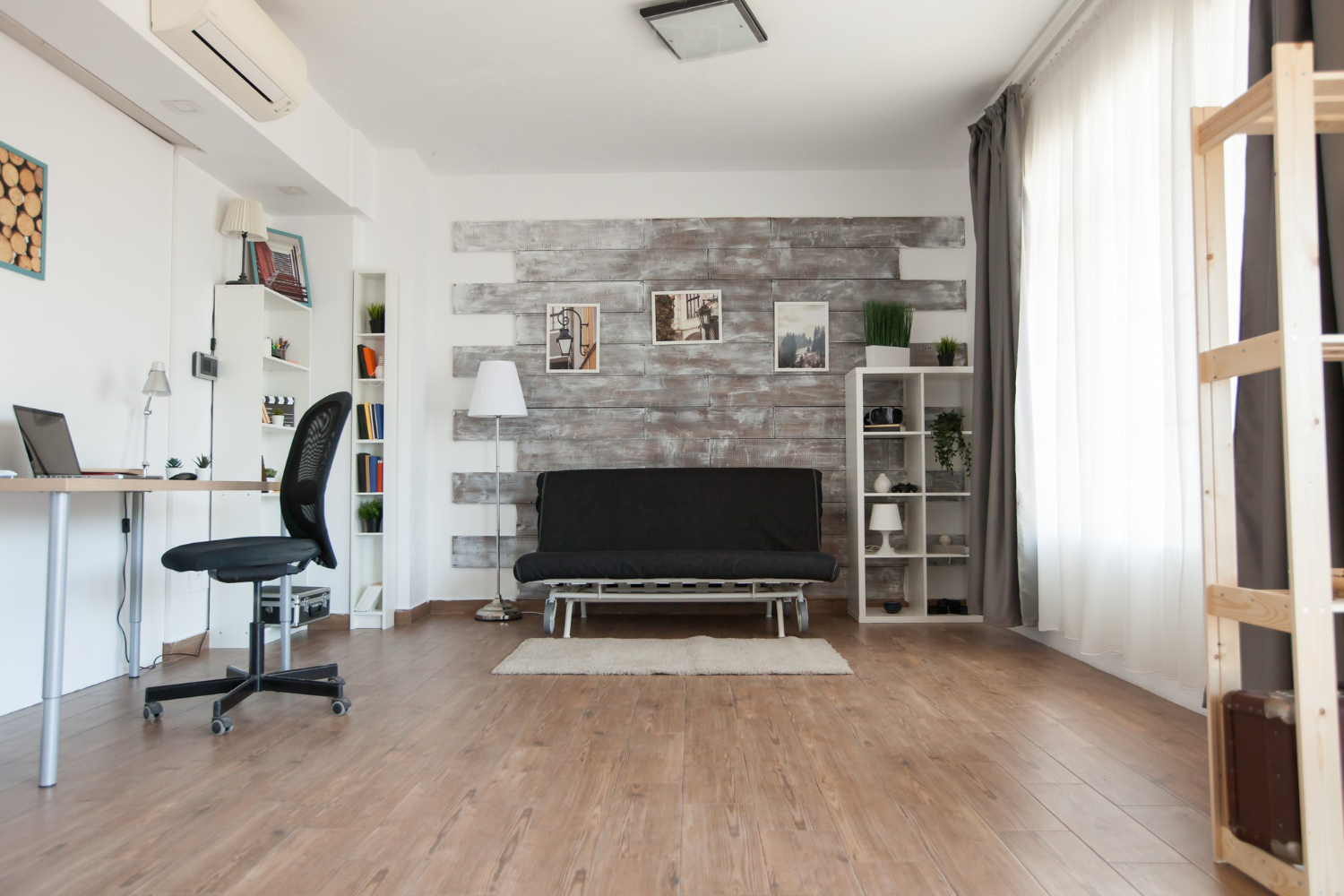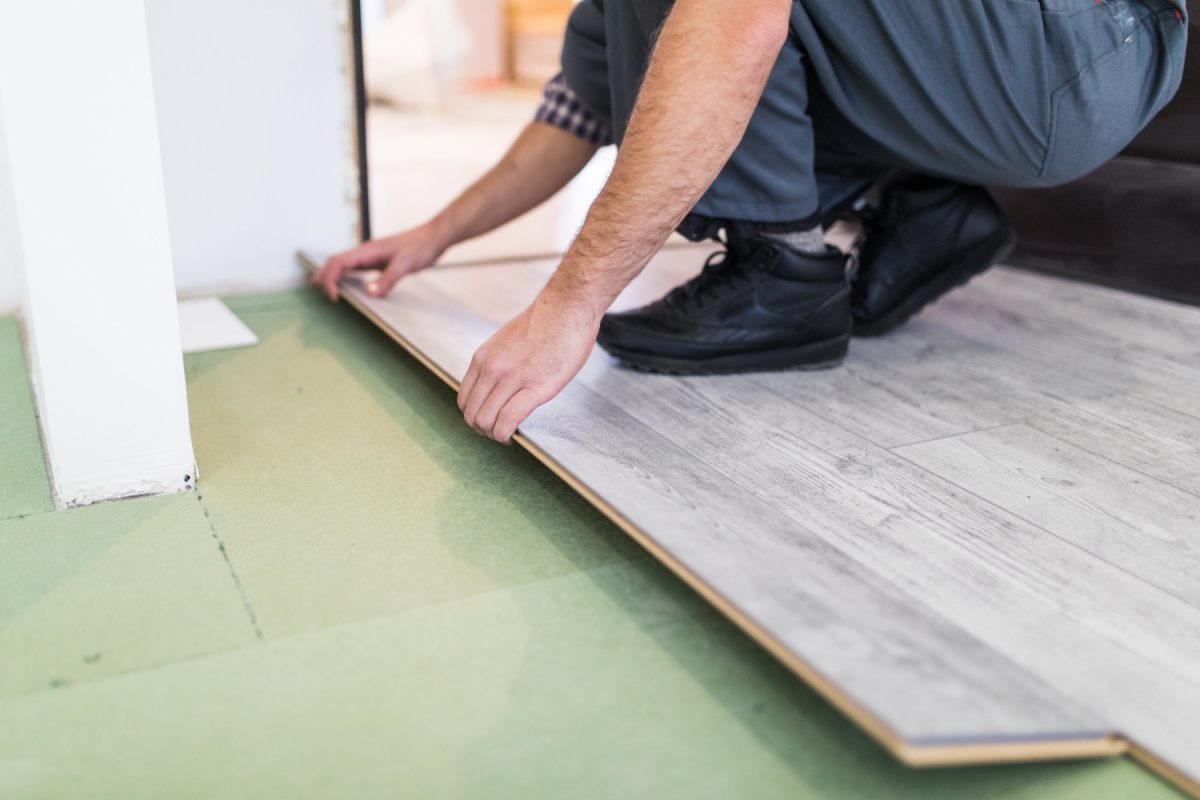Home improvement is a never-ending journey for homeowners, as they continuously seek to enhance the aesthetics, functionality, and value of their living spaces. One of the most impactful ways to achieve these goals is through the installation of hardwood flooring. Hardwood floors have been a popular choice for centuries, and their timeless appeal and numerous benefits make them a valuable addition to any home. In this comprehensive guide, we will delve into the many advantages of hardwood flooring and explore the various aspects of installation, maintenance, and design to help you make an informed decision on how Hardwood flooring can improve your home.
The Timeless Elegance of Hardwood
Hardwood flooring has been a symbol of luxury and beauty for centuries. Its enduring appeal lies in its natural, warm, and inviting appearance. Here’s why hardwood remains a timeless choice:
- Classic Aesthetic- Hardwood floors exude elegance and charm. They have the unique ability to complement any interior design style, from traditional to contemporary.
- Versatile Options- A wide range of wood species, finishes, and colors allows you to customize your flooring to match your home’s décor.
- Longevity – Well-maintained hardwood floors can last for generations, making them a long-term investment.
- Increased Home Value- Hardwood flooring enhances your home’s resale value, attracting potential buyers with its durability and beauty.
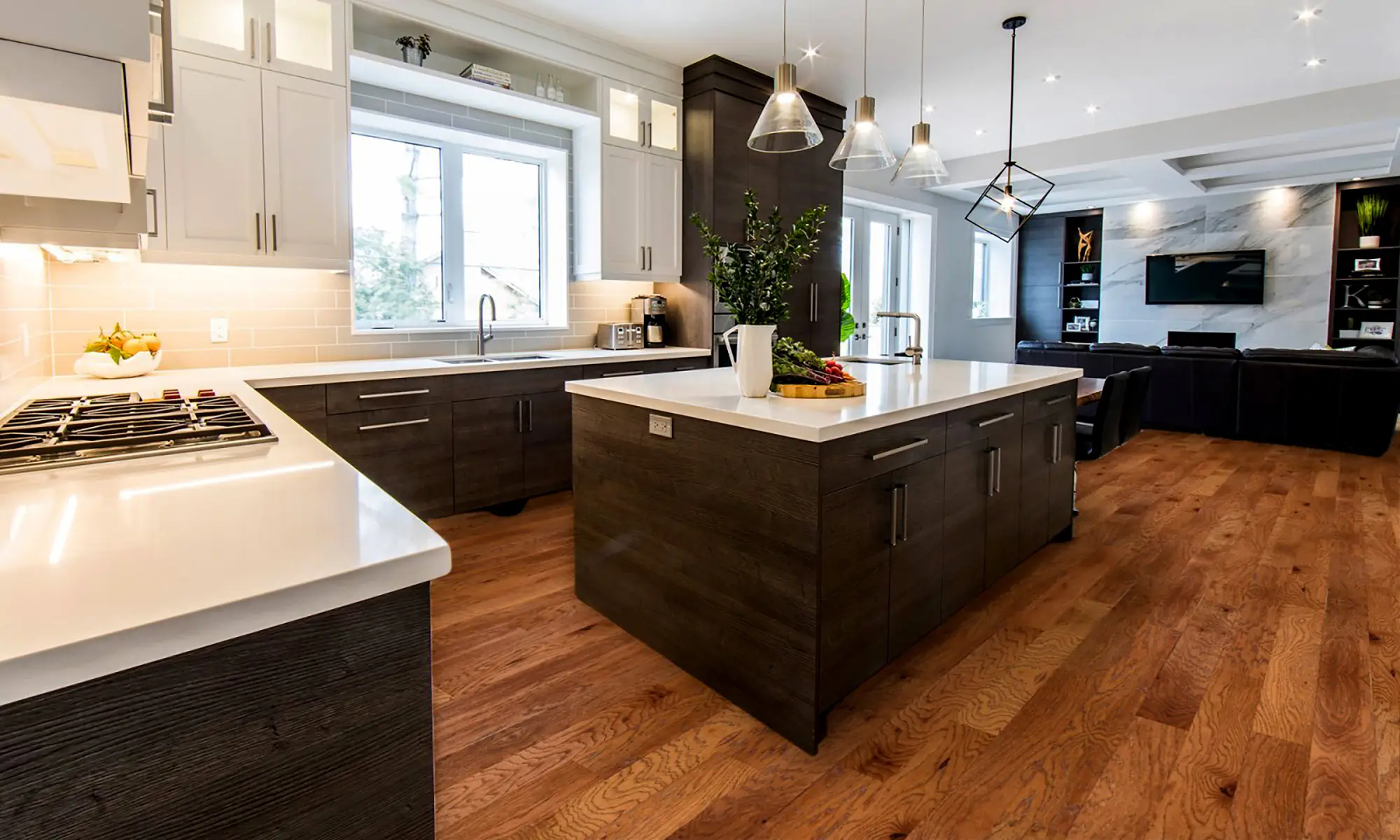
Benefits of Hardwood Flooring
Choosing hardwood flooring for your home can provide numerous benefits, both practical and aesthetic. Here are some of the key advantages:
- Durability: Hardwood is exceptionally durable and can withstand heavy foot traffic and wear over the years.
- Easy Maintenance: Cleaning and maintaining hardwood floors is straightforward, as they only require regular sweeping and occasional refinishing.
- Improved Air Quality: Hardwood floors don’t trap allergens like carpets, making them an excellent choice for allergy sufferers.
- Eco-Friendly: Hardwood is a renewable resource, and sustainable harvesting practices ensure that it remains an environmentally responsible choice.
- Resale Value: Hardwood flooring adds to the resale value of your home, often recouping the initial investment when selling.
- Timeless Elegance: The classic look of hardwood never goes out of style and complements a wide range of interior design styles.
- Versatile Design: With various wood species, stains, and finishes available, you can achieve a tailored look to match your home’s aesthetic.
- Thermal Insulation: Hardwood has natural insulating properties, helping to keep your home warmer in the winter and cooler in the summer.
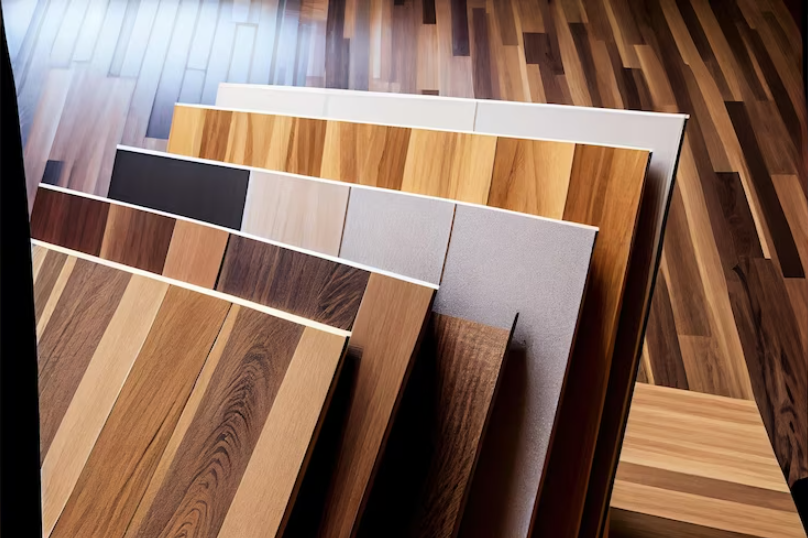
Types of Hardwood Flooring
Before you embark on the journey of installing hardwood flooring in your home, it’s important to understand the various types available. Different types of hardwood have distinct characteristics and features, so choosing the right one for your space is crucial. Here are some common options:
- Solid Hardwood: Solid hardwood flooring is made from a single piece of wood, offering a timeless and classic appearance. It can be refinished multiple times, making it a long-lasting choice. Common wood species for solid hardwood include oak, maple, cherry, and walnut.
- Engineered Hardwood: Engineered hardwood is constructed by layering thin planks of wood in a cross-grain pattern. This construction enhances stability and resistance to moisture, making it suitable for areas like basements. It also allows for a wide range of wood species and finishes.
- Exotic Hardwood: Exotic hardwoods, such as Brazilian cherry, tigerwood, and acacia, offer unique and distinctive looks. They often feature rich colors and striking grain patterns, making them a bold choice for statement flooring.
- Reclaimed or Salvaged Hardwood: Reclaimed or salvaged hardwood is sourced from older buildings and repurposed into new flooring. It provides a rustic and environmentally conscious option for those who appreciate the character and history of aged wood.
- Wide Plank Hardwood: Wide plank flooring is characterized by wider-than-average boards. This style creates a sense of openness and spaciousness in a room while showcasing the natural beauty of the wood grain.
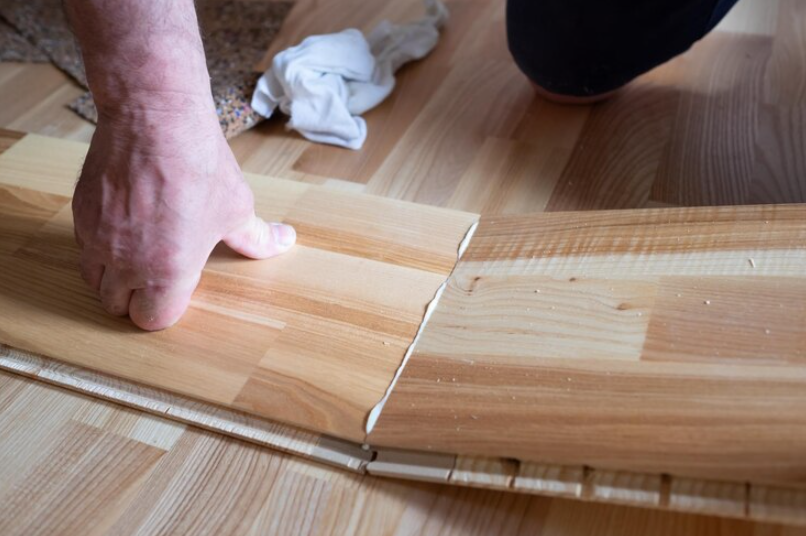
Installation Process
The installation of hardwood flooring is a critical phase that requires careful planning and execution to ensure a beautiful and durable result. Here’s an overview of the installation process:
- Subfloor Preparation: The subfloor must be clean, dry, level, and free from imperfections before installation. Any irregularities should be addressed to prevent issues with the final floor.
- Acclimation: Hardwood planks need to acclimate to the environment in which they will be installed. This helps prevent warping or gaps in the flooring after installation.
- Layout and Design: Plan the layout of the flooring to ensure an aesthetically pleasing arrangement. Consider the room’s dimensions, lighting, and the desired visual effect.
- Installation Method: There are different installation methods, including nail-down, glue-down, and click-lock. The choice depends on the type of hardwood and the subfloor.
- Sanding and Finishing: After installation, the hardwood may require sanding and finishing to achieve the desired look and smooth surface. This step can include staining or applying a protective sealant.
- Baseboards and Transitions: Install baseboards and transitions to create a finished and seamless look where the hardwood flooring meets other surfaces, such as walls or carpeted areas.
- Final Inspection: Carefully inspect the installed hardwood for any imperfections, ensuring that everything meets your expectations before moving furniture back in.
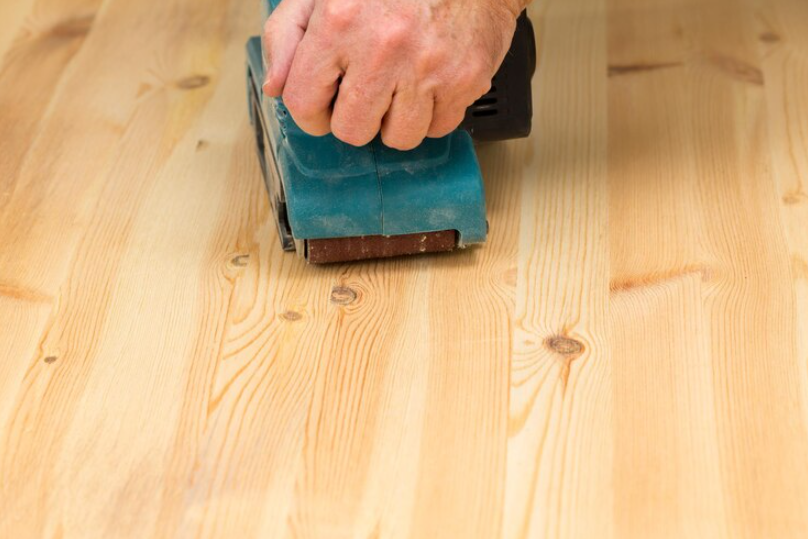
Maintenance and Care
Maintaining the beauty and longevity of your hardwood floors requires regular care and attention. Here are some essential tips for keeping your hardwood flooring in top condition:
- Cleaning: Regularly sweep or vacuum your hardwood floors to remove dirt and debris. Use a microfiber mop or cloth for gentle, effective cleaning.
- Avoid Moisture: Excessive moisture can damage hardwood. Wipe up spills immediately and use area rugs in high-moisture areas like kitchens and bathrooms.
- Floor Protectors: Place felt pads or protective caps on furniture legs to prevent scratches and dents. High-traffic areas may benefit from rugs or runners.
- Refinishing: Over time, hardwood floors may show signs of wear. Refinishing, which involves sanding and reapplying a finish, can restore their original beauty.
- Humidity Control: Maintain proper indoor humidity levels to prevent the wood from shrinking or expanding. Use a humidifier in dry climates and a dehumidifier in humid climates.
- Trim Pet Nails: Keep your pets’ nails trimmed to prevent scratches and gouges on your hardwood flooring.
- Avoid Harsh Cleaners: Use hardwood-specific cleaning products or a mixture of mild soap and water for cleaning. Harsh chemicals can damage the finish.
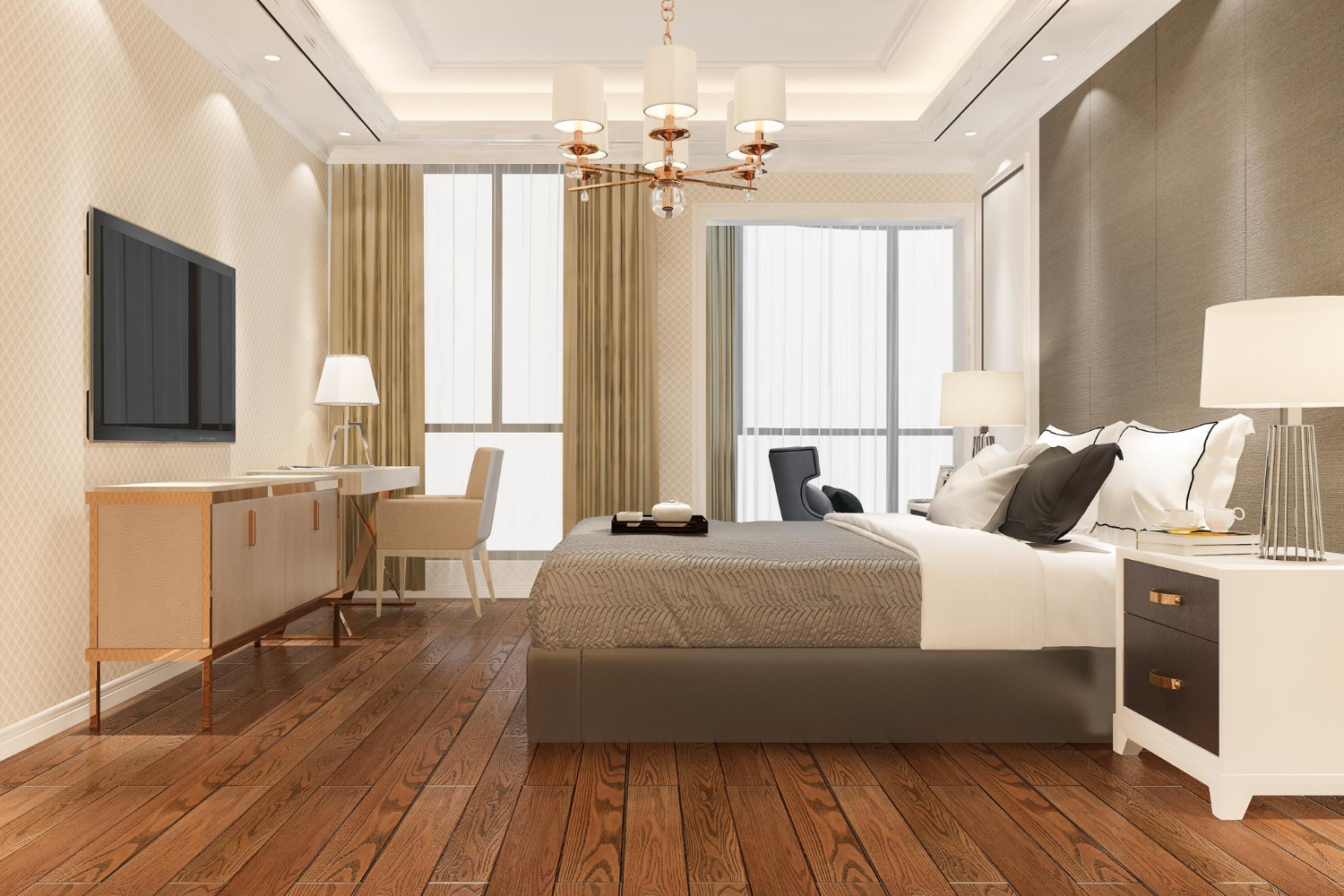
Hardwood Flooring and Design
Hardwood flooring plays a significant role in the overall design and aesthetics of your home. The choice of wood species, color, and finish can dramatically impact the look and feel of your space. Let’s explore how hardwood flooring can enhance your interior design:
- Wood Species: Different wood species offer distinct characteristics. For example, oak is known for its durability and versatility, while cherry provides a warm, rich appearance. Consider your design goals when selecting a wood species.
- Color and Finish: The color and finish of your hardwood can set the tone for a room. Lighter woods create an airy and open feel, while darker woods add depth and sophistication. Satin or matte finishes offer a more subtle appearance, while high-gloss finishes can make a bold statement.
- Pattern and Layout: The way you arrange your hardwood planks can influence the perceived size and shape of a room. Herringbone and chevron patterns add a touch of elegance, while traditional straight-lay patterns are timeless.
- Contrast and Balance: Hardwood floors can be used to create visual contrast or balance in a room. For example, pairing dark floors with light-colored walls and furniture can create a striking contrast, while using similar tones throughout the space can provide a harmonious balance.
- Transitions and Borders: Hardwood can be used to create transitions between different rooms or to add decorative borders to define specific areas within a space.
- Accessories and Decor: Your choice of rugs, curtains, and furniture can complement and enhance the look of your hardwood flooring. Coordinating colors and styles can create a cohesive design.
Hardwood Flooring in Different Rooms
Hardwood flooring is a versatile choice that can be used in various rooms throughout your home. Each room has its own unique requirements and considerations, so it’s essential to choose the right type of hardwood and design for each space:
- Living Room: Hardwood flooring in the living room creates a welcoming and elegant atmosphere. Consider warm, inviting wood species like oak or maple. Area rugs can add comfort and define seating areas.
- Dining Room: Hardwood flooring is an excellent choice for the dining room, as it’s easy to clean and enhances the overall aesthetic. Consider a durable wood species like oak or hickory to withstand potential spills and heavy furniture.
- Kitchen: While hardwood is not typically recommended for high-moisture areas like kitchens, it can work with proper precautions. Consider engineered hardwood, which is more moisture-resistant. Use rugs in front of the sink and appliances to protect against spills.
- Bedroom: Bedrooms benefit from the warmth and comfort of hardwood flooring. Choose wood species that create a cozy atmosphere, like cherry or walnut. Area rugs can be added for extra comfort and style.
- Bathroom: Engineered hardwood or luxury vinyl planks are suitable for bathrooms due to their moisture resistance. Ensure proper sealing and take measures to protect the floor from water exposure.
- Hallways and Entryways: Hardwood floors in hallways and entryways create a seamless flow throughout your home. Consider durable wood species to withstand heavy foot traffic in these areas.
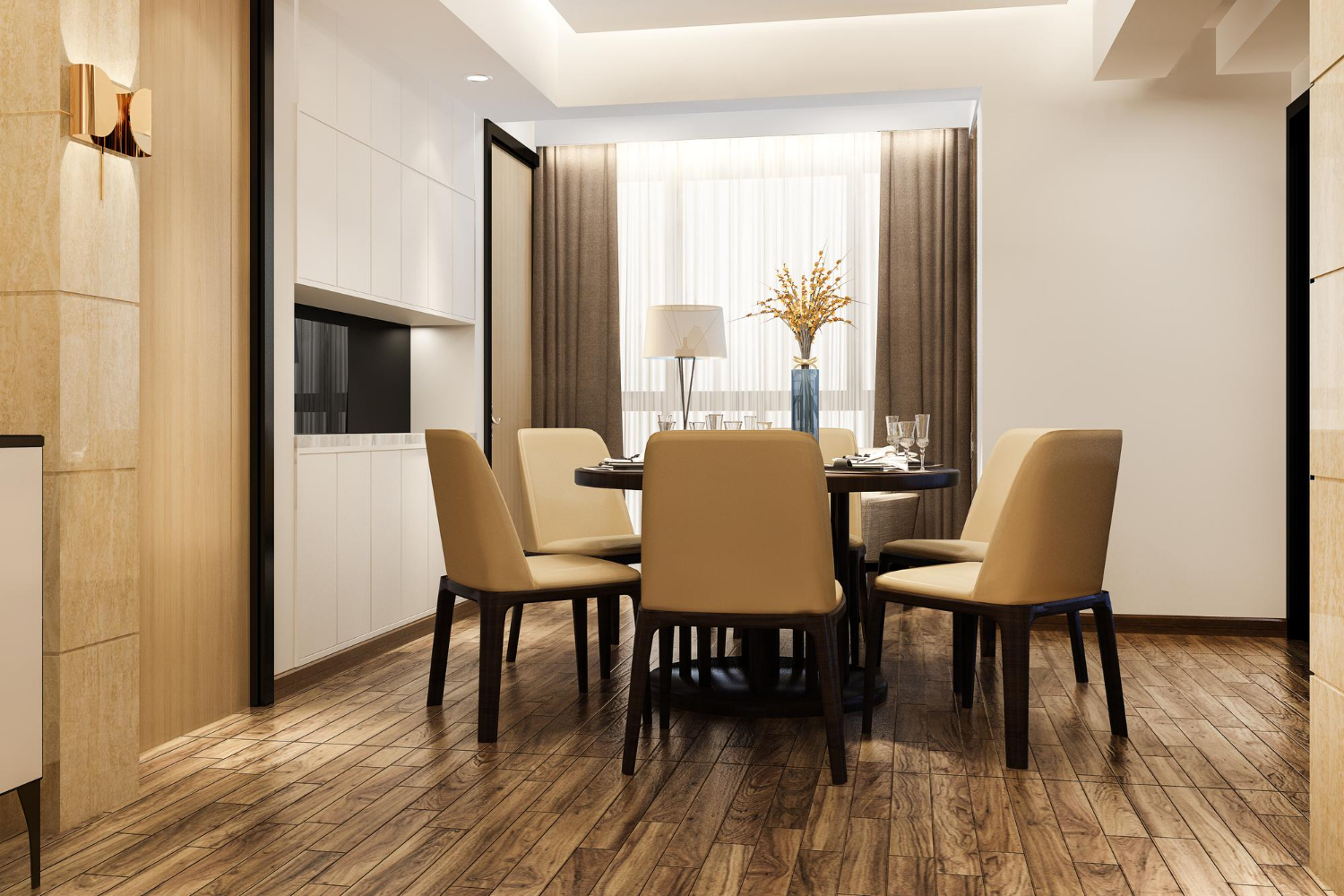
Hardwood Flooring and Home Value
Hardwood flooring is not only an attractive addition to your home but also a smart investment that can increase your property’s resale value. Here are some ways in which hardwood flooring positively impacts your home’s worth:
- Aesthetic Appeal: The classic and timeless look of hardwood flooring is appealing to potential buyers. It creates a favorable first impression and often results in a higher selling price.
- Durability: The long-lasting nature of hardwood floors means that new owners won’t have to worry about replacing or repairing the flooring in the near future, making your home more attractive to buyers.
- Low Maintenance: Hardwood floors are relatively low-maintenance compared to other flooring types, saving future homeowners time and effort.
- Universal Appeal: Hardwood flooring complements a wide range of interior design styles, making it attractive to a broad spectrum of potential buyers.
- Increased Marketability: Homes with hardwood flooring are often more marketable and can sell more quickly than those with other flooring types.
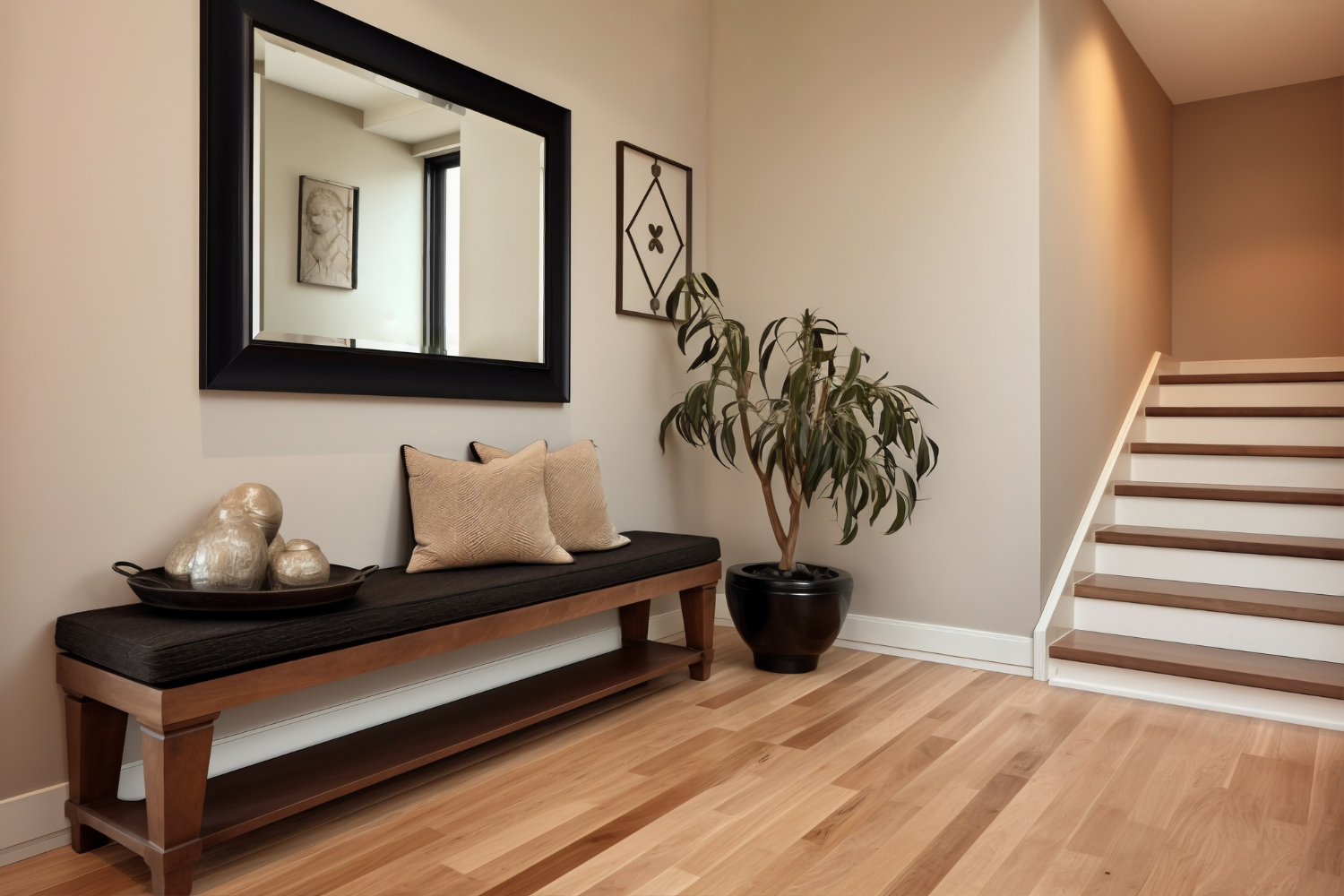
Hardwood Flooring Trends
The world of interior design and home improvement is constantly evolving, and hardwood flooring trends are no exception. Staying up to date with these trends can help you make design choices that are both current and timeless. Here are some notable hardwood flooring trends:
- Lighter Tones: Lighter hardwood floors, such as white oak and maple, have gained popularity for their ability to create an open and airy feel in a room.
- Matte Finishes: Matte finishes have become more fashionable, as they offer a subtle and modern look while hiding imperfections and reducing glare.
- Wide Planks: Wide plank hardwood flooring is on-trend for its ability to make a room feel more spacious and its aesthetic appeal.
- Grey and Greige: Grey and greige (a blend of grey and beige) tones are increasingly used for a modern and neutral aesthetic that pairs well with various design styles.
- Exotic Woods: Exotic hardwoods like acacia and tigerwood are being used to make a bold statement and add unique character to spaces.
- Mixing Wood Species: Designers are experimenting with mixing different wood species within the same space to create striking visual contrasts and focal points.
- Sustainable Options: Homeowners are increasingly looking for sustainable and eco-friendly hardwood flooring options, such as reclaimed wood or wood from responsibly managed forests.
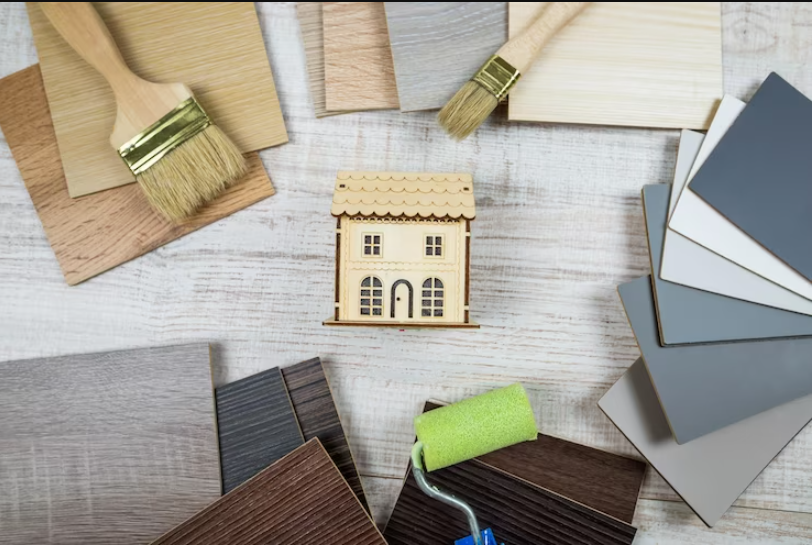
Hardwood Flooring Cost and Budgeting
The cost of hardwood flooring can vary widely depending on factors such as the type of wood, installation method, and the size of the project. When budgeting for hardwood flooring, consider the following expenses:
- Cost of Materials: The primary cost is the hardwood itself, which can range from affordable to high-end, depending on the wood species and grade.
- Installation: Installation costs depend on the chosen method (nail-down, glue-down, or click-lock), the complexity of the project, and labor rates in your area.
- Subfloor Preparation: If the subfloor needs extensive work or leveling, this will add to the overall project cost.
- Finishing and Staining: If you choose to stain or finish the wood, this will require additional materials and labor.
- Accessories: Budget for items like baseboards, transitions, and underlayment.
- Maintenance: Over the long term, factor in the cost of maintenance, which may include periodic refinishing.
To get an accurate estimate for your specific project, it’s advisable to obtain quotes from local flooring professionals. Keep in mind that while hardwood flooring may have a higher initial cost than some other flooring options, its longevity and impact on your home’s value make it a worthwhile investment.
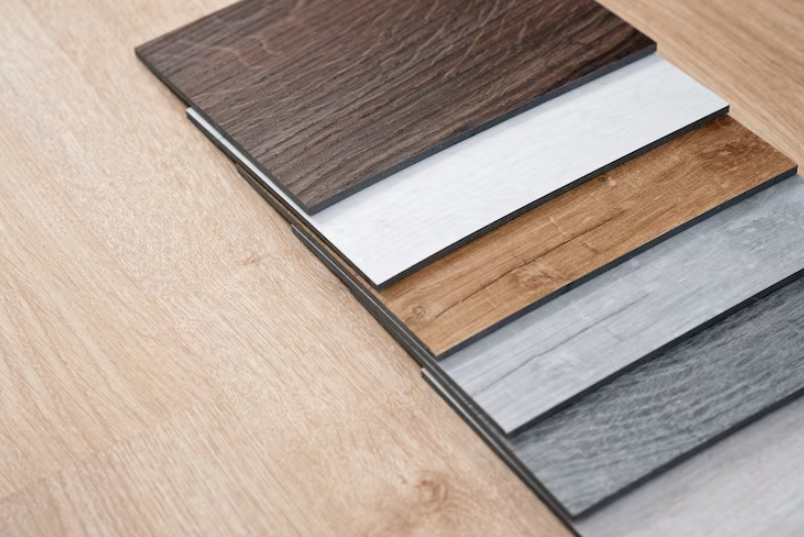
Hardwood Flooring vs. Other Flooring Options
While hardwood flooring offers numerous benefits, it’s essential to consider how it compares to other flooring options before making a decision. Here’s a comparison of hardwood flooring with some common alternatives:
- Hardwood vs. Laminate: Laminate flooring can mimic the look of hardwood but is not as durable. While it’s more budget-friendly, it may not add as much value to your home.
- Hardwood vs. Carpet: Carpet is a softer and warmer option but tends to trap allergens and has a shorter lifespan. Hardwood flooring is easier to clean and more durable.
- Hardwood vs. Tile: Tile flooring is durable and moisture-resistant, making it suitable for high-moisture areas. However, it can be cold and hard underfoot, lacking the warmth and elegance of hardwood.
- Hardwood vs. Vinyl: Vinyl flooring is budget-friendly, waterproof, and low-maintenance. However, it may lack the timeless appeal of hardwood and may not contribute as significantly to home value.
- Hardwood vs. Engineered Wood: Engineered wood offers similar aesthetics to solid hardwood but is more moisture-resistant. It’s a good choice for areas where moisture is a concern.
Ultimately, the choice between hardwood and other flooring options depends on your budget, design preferences, and the specific needs of each room in your home.
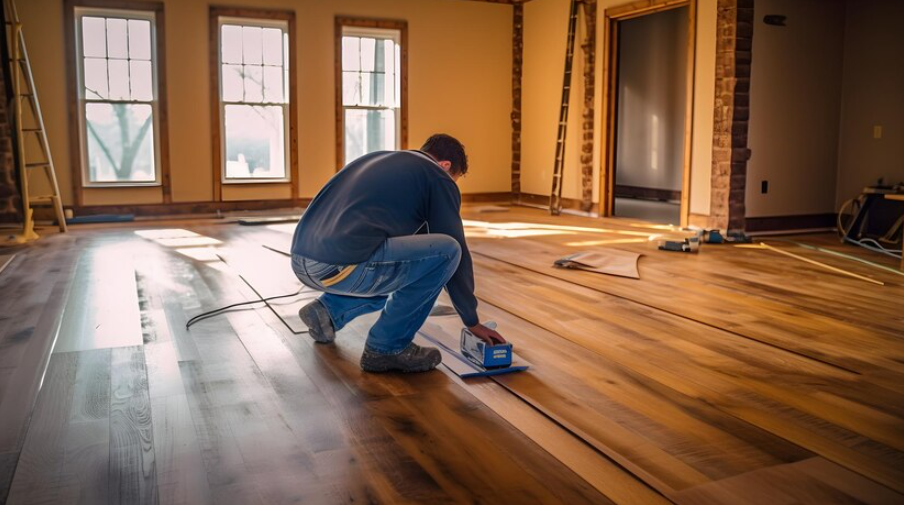
Troubleshooting Common Hardwood Flooring Issues
While hardwood flooring is durable and long-lasting, it can encounter various issues over time. Understanding these common problems and how to address them is essential for maintaining the integrity of your hardwood floors:
- Scratches and Dents: Use rugs, felt protectors on furniture legs, and regular cleaning to prevent scratches and dents. Minor scratches can be remedied with touch-up kits, while deeper ones may require refinishing.
- Gaps and Cupping: Changes in humidity levels can cause gaps or cupping (warped boards) in hardwood flooring. Maintain consistent humidity and address issues promptly to prevent further damage.
- Stains: Remove stains from hardwood floors by blotting and cleaning with a recommended wood floor cleaner. Some stubborn stains may require sanding and refinishing.
- Fading: Direct sunlight can cause hardwood floors to fade over time. Use window coverings to protect the floor from prolonged exposure to sunlight.
- Moisture Damage: Prevent moisture damage by using area rugs in moisture-prone areas and promptly cleaning up spills. In extreme cases, you may need to replace damaged boards.
- Noisy Floors: Squeaky or noisy floors can be fixed by securing loose boards with screws or nails and filling gaps with wood filler.
- Fading Finish: Over time, the finish on hardwood floors may dull. To restore the shine, consider recoating or refinishing.
Conclusion Hardwood flooring can improve your home
Hardwood flooring has a timeless allure that can enhance the aesthetics, value, and functionality of your home. Its durability, low maintenance, and classic appeal make it a valuable investment. When choosing hardwood flooring, consider the type of wood, design options, and the needs of each room in your home. Stay informed about current trends and maintenance practices to ensure your hardwood floors remain in top condition.
Whether you’re renovating your existing home or building a new one, hardwood flooring is a choice that can bring lasting beauty and value to your living space. Embrace the warmth and elegance of hardwood, and watch as it transforms your home into a timeless and inviting haven.
In summary, Hardwood flooring can improve your home in numerous ways, from enhancing its aesthetic appeal and value to providing a durable and long-lasting flooring solution. By understanding the various types of hardwood, the installation process, maintenance and care, design considerations, and its impact on home value, you can make an informed decision about how hardwood flooring can benefit your living space.


